Golden silk orb-weaver, Genus Trichonephila
TAXONOMY: Nephilid spiders
Another group of spiders that have done a tour of various families are the Nephilidae. In the June 2017 issue of the Spider Club News (Issue 33/2) we reported as follows:
“Things have gone full circle for the colourful Nephilidae. When Astri Leroy first became interested in spiders, Nephilidae did not have family rank, and the nephilids were placed in Araneidae – the orb web spiders. When I became involved many years later, I noted from Dippenaar & Jocqué (1997) that Nephilinae was a subfamily of the Tetragnathidae. They were then moved to their own family, the Nephilidae, until now.”
An advance article has now been published which places the Nephilinae back in their own family, Nephilidae, and rejects the findings in Dimitrov et al (2016) which moved the Nephilidae to Araneidae. The lead author of the new paper, Matjaž Kuntner, has published many papers on this group of spiders, and has described a new species, Nephila komaci (Kuntner and Coddington 2009), from Zululand with Jonathan Coddington, a co-author of the new paper. Kuntner et al have also resurrected the genus Trichonephila Dahl 1911 and placed most Nephila species in this genus, including all the Nephila species of southern Africa. Only two species are left in Nephila, neither from our region. This change is based on phylogenetic analysis.
The
golden silk orb-weavers (genus Trichonephila) are a genus of araneomorph spiders noted for the impressive webs they weave.
Trichonephila consists of numerous individual species found around the world. They are also commonly called golden orb-weavers, giant wood spiders, or banana spiders. In North America, the golden silk orb-weavers are sometimes referred to as writing spiders due to occasional zigzag patterns (stabilimenta) built into their webs, though these occur much more frequently in the webs of
Argiope, such as the St Andrew's Cross spider.
The genus name
(Trichonephilais derived from Ancient Greek, meaning "fond of spinning",from the words (nen) = to spin (related to nema νήμα "thread") + φίλος (philos) = "love".
Appearance and distribution
Trichonephila spiders vary from reddish to greenish yellow in color with distinctive whiteness on the cephalothorax and the beginning of the abdomen. Like many species of the superfamily Araneoidea, they have striped legs specialized for weaving (where their tips point inward, rather than outward as is the case with many wandering spiders). Their contrast of dark brown/black and green/yellow allows warning and repelling of potential predators to whom their venom might be of little danger.
Golden orb-weavers reach sizes of 4.8–5.1 cm in females, not including legspan, with males being usually 2/3 smaller (less than 2.5 cm). The largest specimen ever recorded was a 6.9 cm female
N. plumipes (which is now debated to have been a new yet undocumented subspecies) from Queensland, that was able to catch and feed on a small-sized finch. In 2012 a large individual was photographed killing and consuming a half-metre-long brown tree snake in Freshwater, Queensland. Species from Taiwan have been known to reach over 130 mm, legspan included, in mountainous country.
Golden silk orb-weavers are widespread in warmer regions throughout the world, with species in Australia, Asia, Africa (including Madagascar), and the Americas. One species,
N. clavipes, occurs in the United States of America, where it ranges throughout the coastal southeast and inland, from North Carolina to Texas.
Trichonephila spiders are the oldest surviving genus of spiders, with a fossilized specimen known from 165 million years ago.
Web spinning
The name of the golden silk orb-weavers refers to the color of the spider silk, not the color of the spider itself.
Yellow threads of their web shine like gold in sunlight. Xanthurenic acid, two quinones and an unknown fourth compound contribute to the yellow color. Experimental evidence suggests that the silk's color may serve a dual purpose: sunlit webs ensnare bees that are attracted to the bright yellow strands, whereas in shady spots the yellow blends in with background foliage to act as a camouflage. The spider is able to adjust pigment intensity relative to background light levels and color; the range of spectral reflectance is specifically adapted to insect vision.
The webs of most
Trichonephila spiders are complex, with a fine-meshed orb suspended in a maze of non-sticky barrier webs. As with many weavers of sticky spirals, the orb is renewed regularly if not daily, apparently because the stickiness of the orb declines with age. When weather is good (and no rain has damaged the orb web), subadult and adult Nephila often rebuild only a portion of the web. The spider will remove and consume the portion to be replaced, build new radial elements, then spin the new spirals. This partial orb renewal is distinct from other orb-weaving spiders that usually replace the entire orb web. In 2011 it was discovered that the web of Nephila antipodiana contains ant-repellent chemicals to protect the web.
Toxicity
The venom of the golden silk orb-weaver is potent but not lethal to humans. It has a neurotoxic effect similar to that of the black widow spider; however, its venom is not nearly as powerful. The bite causes local pain, redness, and blisters that normally disappear within a 24-hour interval. In rare cases, it might trigger allergic reactions and result in respiratory troubles (in asthmatics) or fast-acting involuntary muscle cramps. As the genus possesses relatively strong chelicerae, the bite could leave a scar on hard tissue (such as fingers).
Interaction with humans
These spiders do not seem to form either beneficial or harmful relationships with humans. As they weave their webs in bushes and near flowers, they might present a nuisance for gardeners or flower pickers. Some nests near fruits may repel or destroy known pests, such as Tephritid fruit flies, without the need to use insecticides.
Wikipedia
Red-legged Golden Orb-web spider (
Trichonephila inaurata)
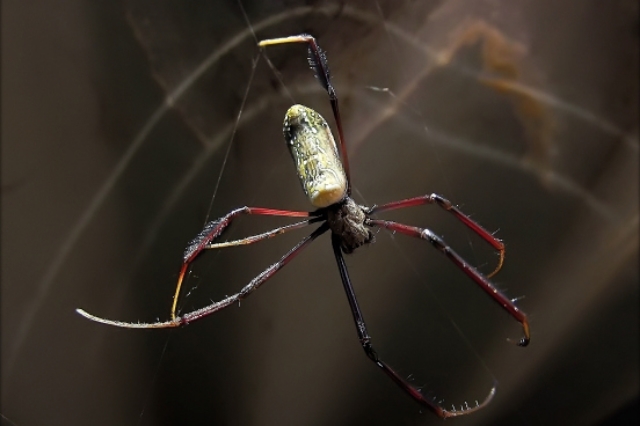
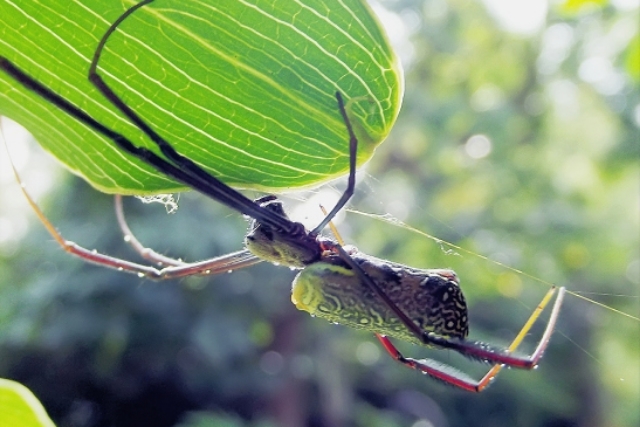
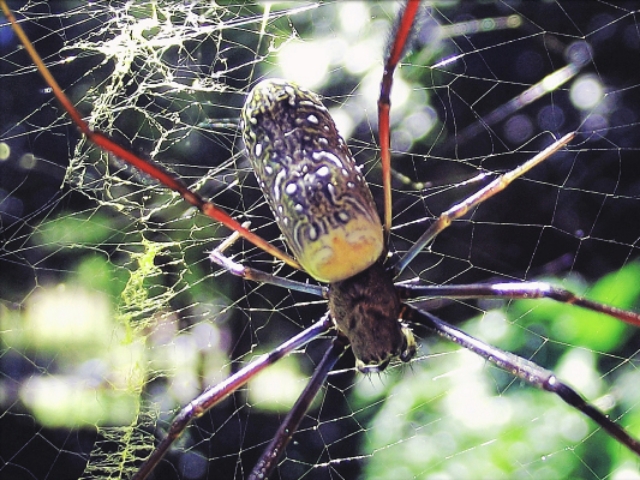
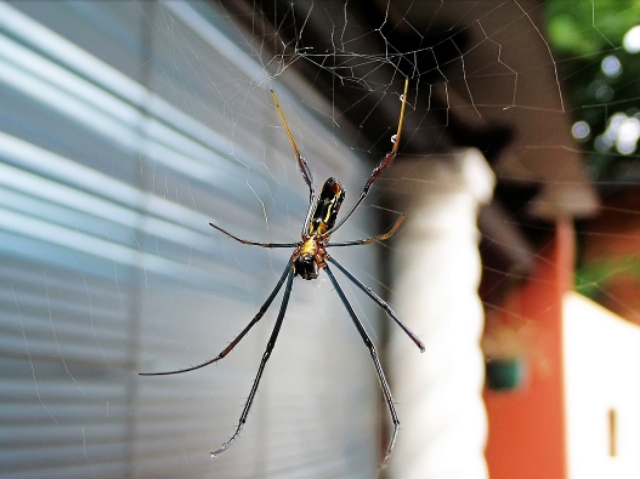
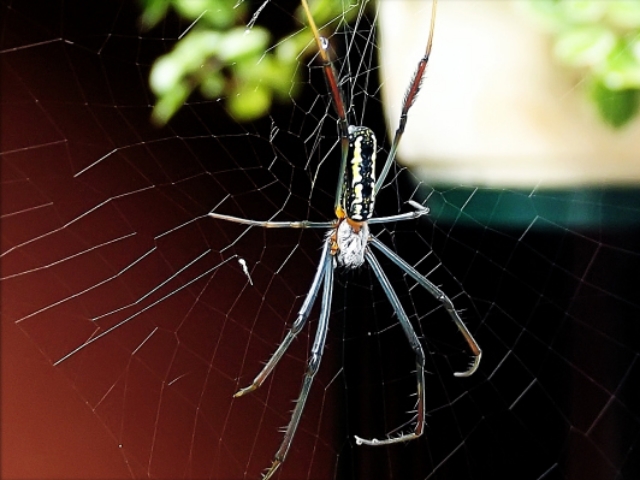
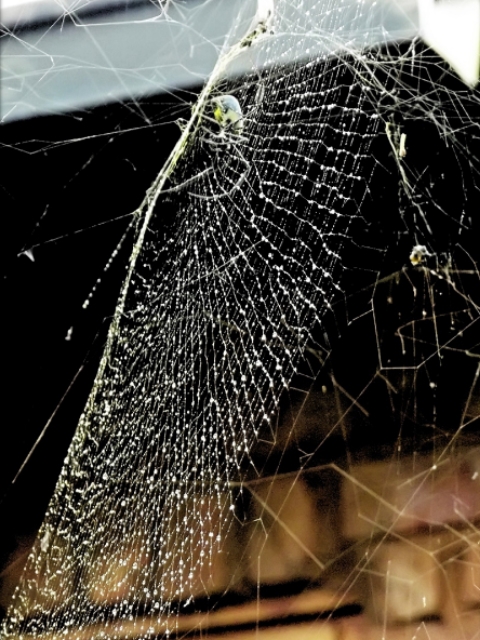
© Photography by Sonel - 2014
The Red-legged Golden Orb-weaver (
Trichonephila inaurata) is a species of golden orb-web spider. It lives in Southern Africa and several islands in the Indian Ocean (Madagascar, the Seychelles, Réunion, Mauritius, Rodrigues). Like other spiders in the family Nephilidae it can weave webs so strong that sometimes even birds and bats get caught. Its webs can be found in damp places such as large trees and unpolluted areas to which no cars have access; normally several are strung together to form enormous "homes" so as to cover as much surface area as possible.
This species feeds on flies, mosquitoes, moths, wasps and unfortunate beetles who happen to get tangled up.
This species is commonly kept in captivity. Egg sacks the size of a small marble are made of thick silk and contain 100-200 eggs which hatch after two months. They start out with a 2 mm legspan and grow rapidly. Males mature in one to two months depending on the form. A small percentage of males mature early and resemble a small, black crab spider with only an 8-10 mm legspan. Most males mature later and resemble the form of the female but have very little color and only a 25-30 mm legspan. Mature males are rarely, if ever, observed feeding. Females mature in four months with an approximate 100 mm legspan.
In addition to the nominate (
Trichonephila i. inaurata), a second subspecies is currently recognized:
Trichonephila inaurata madagascariensis (Vinson, 1863), which occurs from South Africa to the Seychelles.
Wikipedia
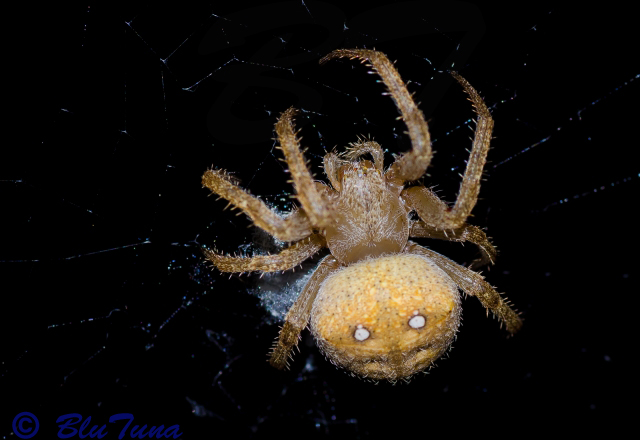 © BluTuna
© BluTuna © BluTuna
© BluTuna
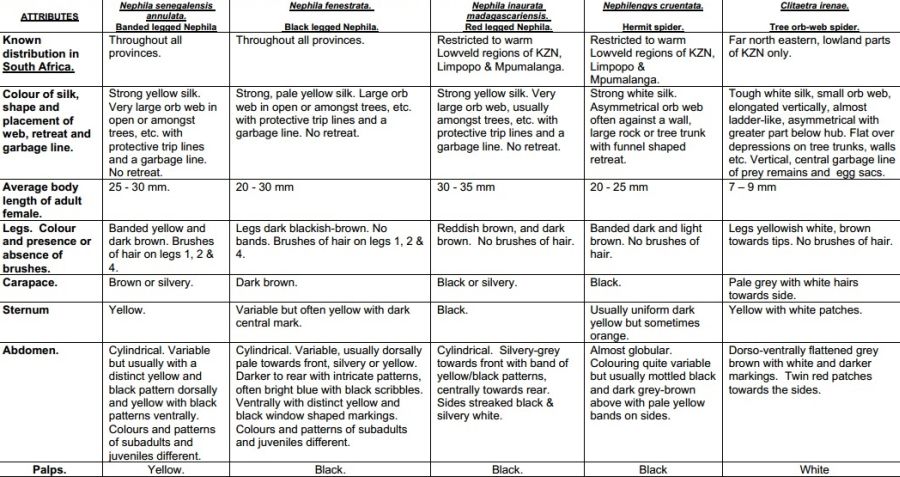






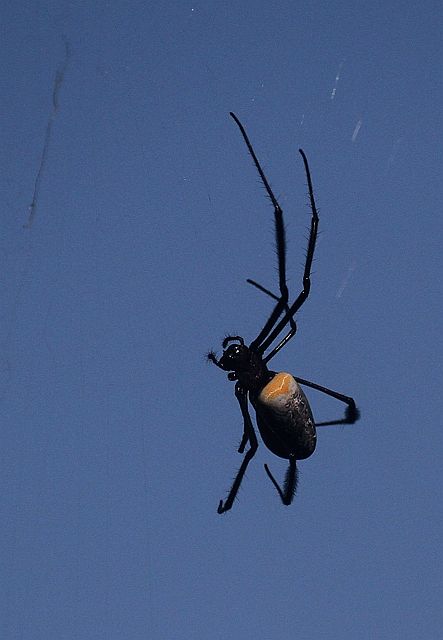 © leachy
© leachy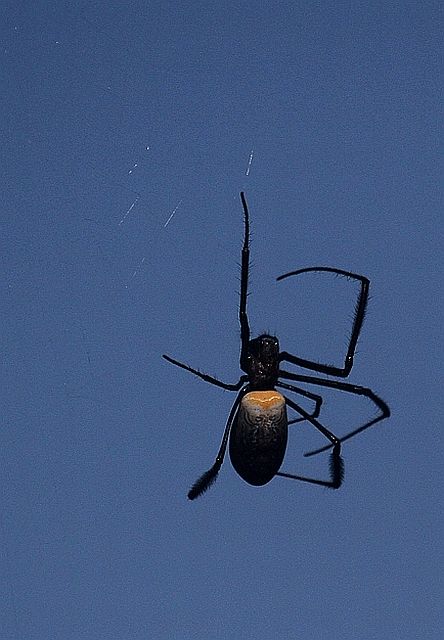 © leachy
© leachy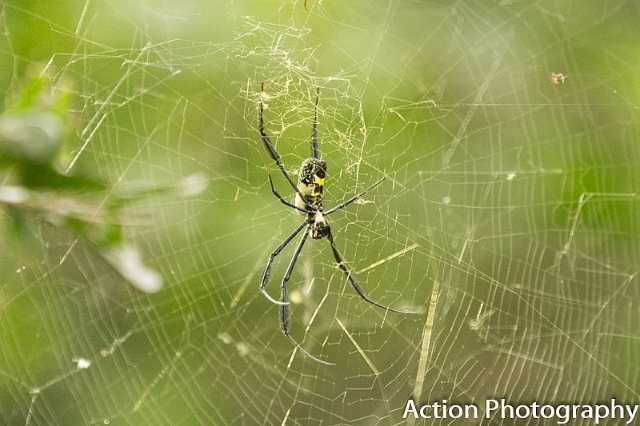 © RogerFraser
© RogerFraser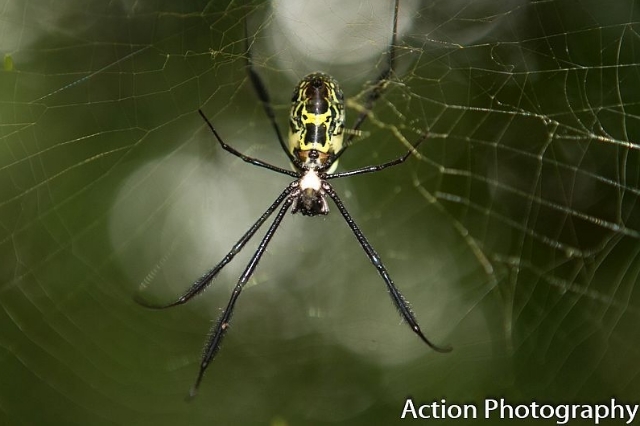 © RogerFraser
© RogerFraser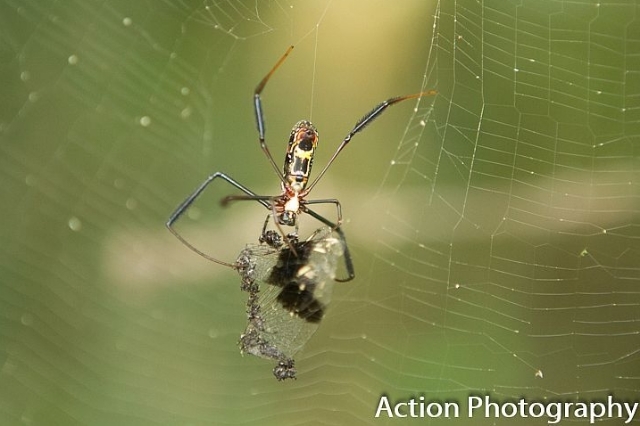 © RogerFraser
© RogerFraser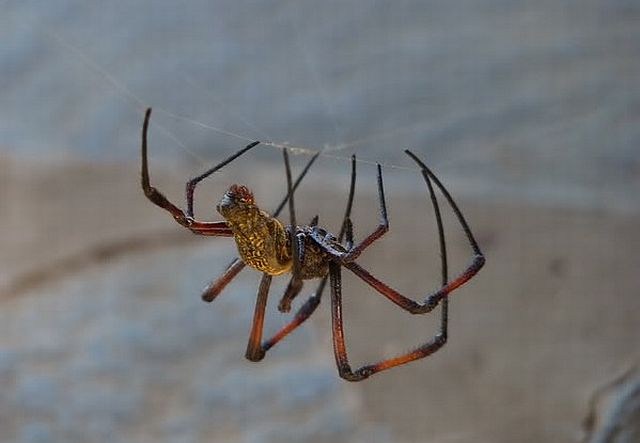 © Bushcraft
© Bushcraft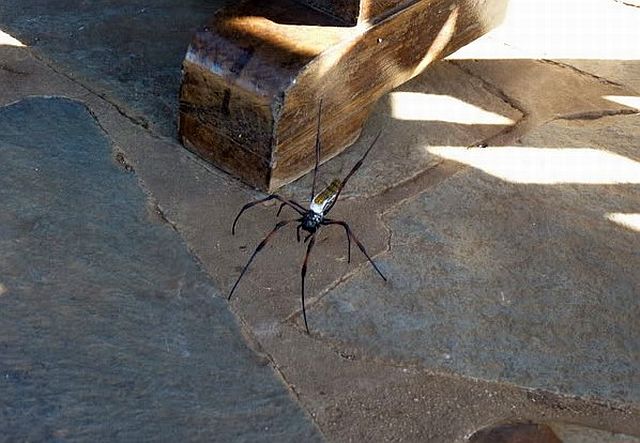 © Bushcraft
© Bushcraft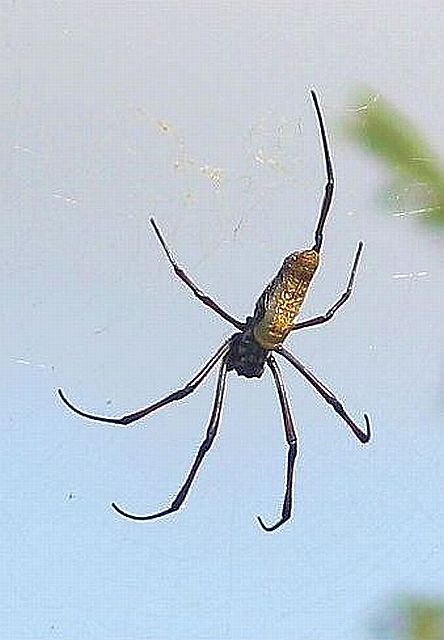 © Amoli
© Amoli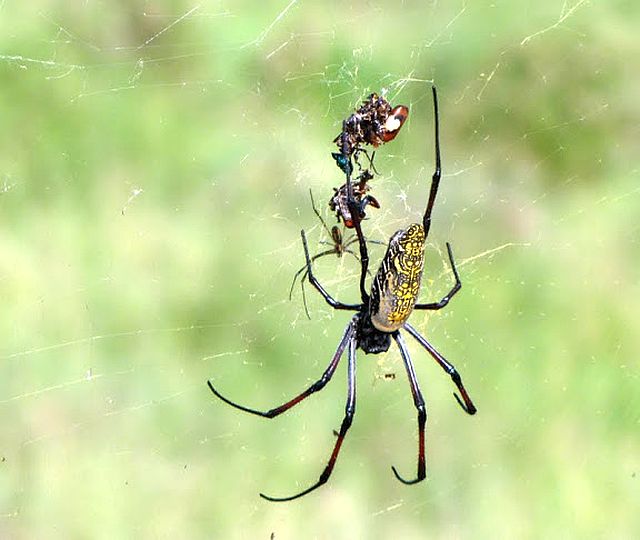 © Lisbeth
© Lisbeth © Flutterby
© Flutterby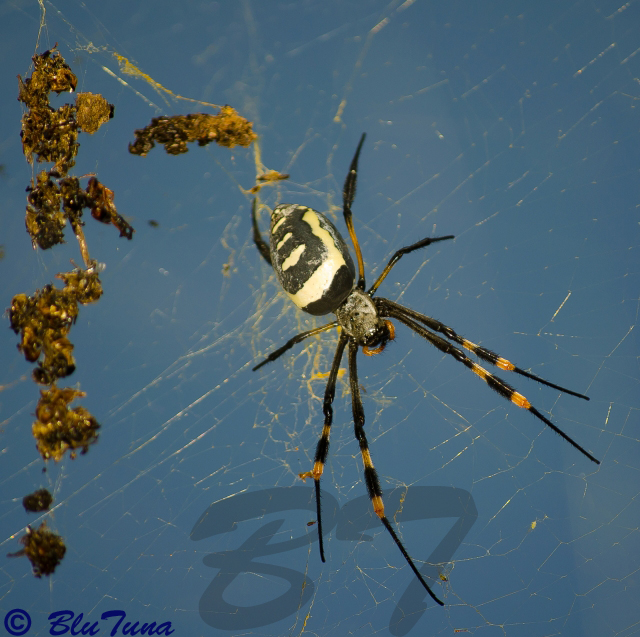 © BluTuna
© BluTuna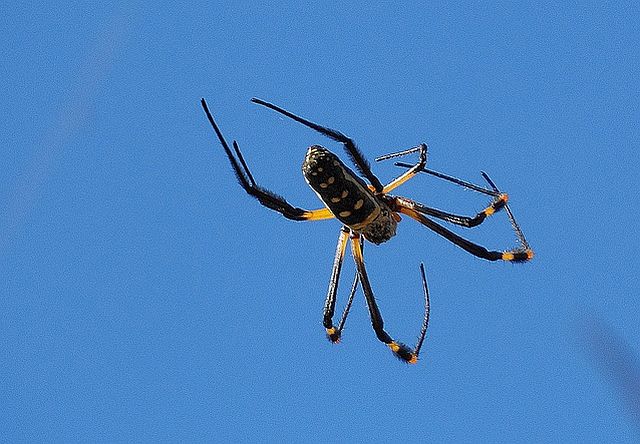 © Moggiedog
© Moggiedog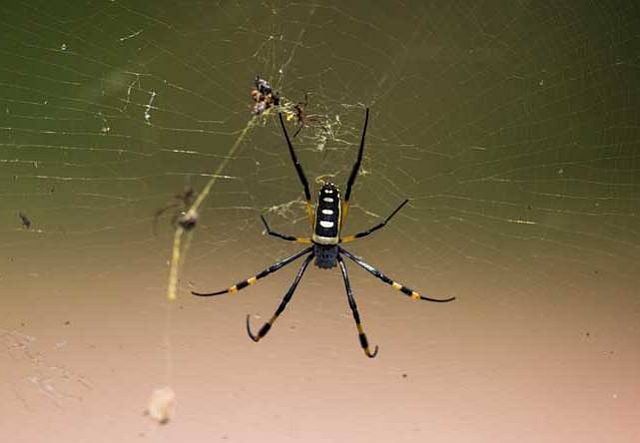 © Pumbaa
© Pumbaa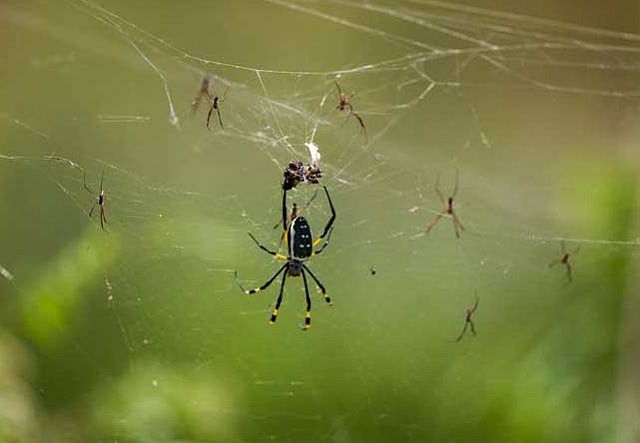 © Pumbaa
© Pumbaa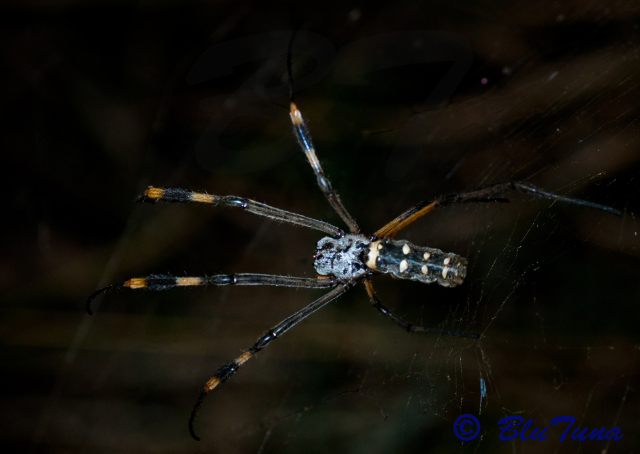 © BluTuna
© BluTuna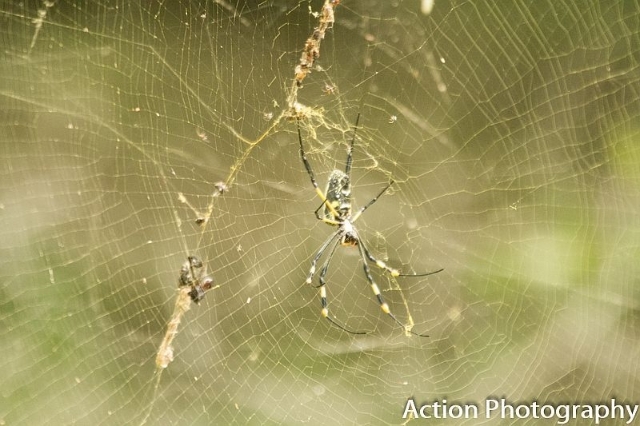 © RogerFraser
© RogerFraser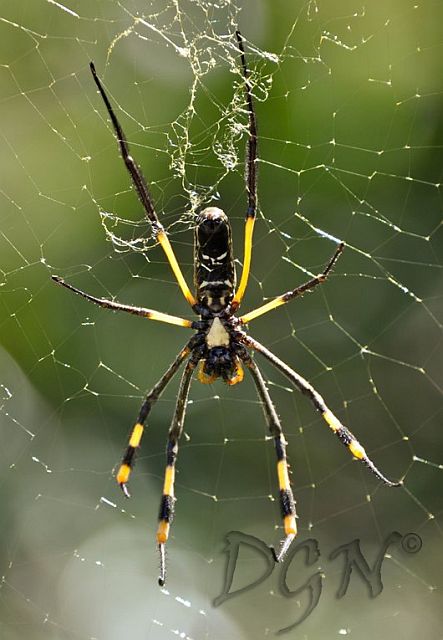 © JustN@ture
© JustN@ture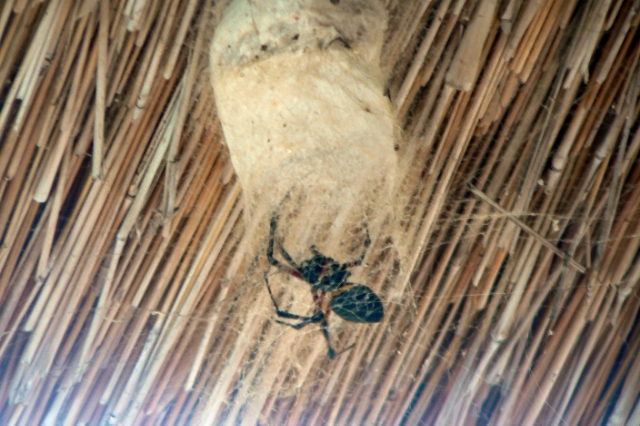 © Toko
© Toko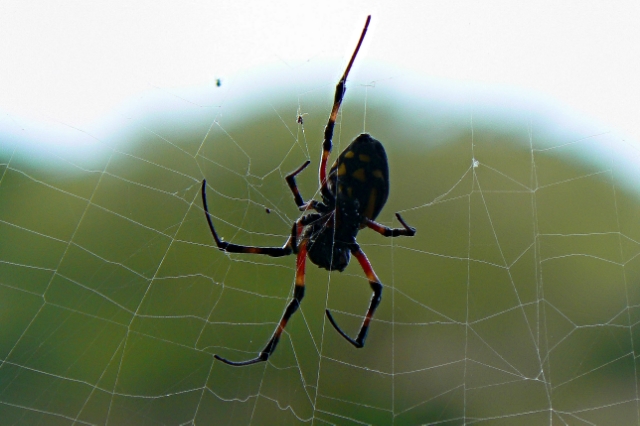 © Toko
© Toko